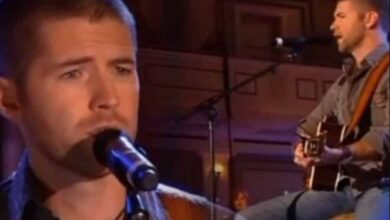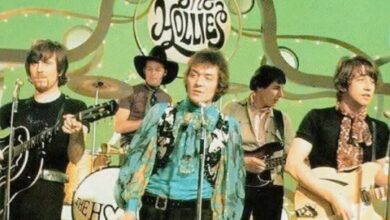Good Vibrations: The Beach Boys’ Revolutionary 1966 Masterpiece That Transformed Pop Music
The Beach Boys’ “Good Vibrations” stands as one of the most iconic tracks in music history, epitomizing an era of artistic innovation and cultural change. Released in 1966, it reflected the band’s willingness to experiment and push the boundaries of traditional pop music, creating a legacy that remains influential to this day.
Brian Wilson, the creative genius behind the song, was inspired by his mother’s idea that dogs could sense people’s “vibrations.” This unique concept fascinated Wilson, sparking his ambition to translate such abstract feelings into music. What began as a simple notion evolved into one of the most elaborate and ambitious compositions of his career.
By 1966, The Beach Boys were already well-established with hits like “California Girls” and “Surfin’ U.S.A.” However, Wilson sought to take the band’s music in a radically new direction. He described “Good Vibrations” as a “pocket symphony,” a term highlighting its intricate structure, layered production, and symphonic complexity within the confines of a pop song.
The creation of “Good Vibrations” was a groundbreaking process. Unlike the conventional practice of recording songs in a single session, Wilson employed a modular approach. He recorded various parts of the song in different studios across Los Angeles and later combined them into the final masterpiece. This innovative method required over 90 hours of tape and cost more than $50,000—a staggering sum for its time.
The track marked a departure from The Beach Boys’ early surf-rock style, incorporating an array of unconventional instruments. Among these, the Electro-Theremin stood out, delivering the song’s hauntingly unique sound. Other elements, such as the cello’s driving rhythm and the harpsichord’s classical touch, created a richly textured soundscape that distinguished the song from anything else on the charts.
The song’s lyrics went through multiple iterations. Initially, Wilson collaborated with Tony Asher, known for his work on the “Pet Sounds” album. However, the final lyrics were written by Mike Love, who infused them with the optimistic and free-spirited ethos of the 1960s. Phrases like “I’m pickin’ up good vibrations” resonated deeply with the era’s countercultural movement, capturing the spirit of a generation.
When “Good Vibrations” was released, it achieved immediate critical and commercial success, reaching the top of the Billboard Hot 100 chart. Critics praised its innovative arrangement and lush production, recognizing it as a landmark in the evolution of pop music. Its success reaffirmed The Beach Boys’ status as one of the leading forces in the industry.
The song’s innovative production techniques influenced countless musicians and producers, encouraging them to explore new approaches to songwriting and recording. Its modular construction became a template for experimental music production, inspiring a wave of creativity that shaped the music of the late 1960s and beyond.
“Good Vibrations” also played a crucial role in solidifying The Beach Boys’ legacy. It represented a peak in their creative journey and highlighted Brian Wilson’s brilliance as both a composer and producer. However, the immense pressure to surpass this monumental achievement contributed to Wilson’s mental health struggles and the eventual shelving of the ambitious “Smile” album.
In the decades since its debut, “Good Vibrations” has been celebrated and reinterpreted by numerous artists, reflecting its enduring influence. Its groundbreaking approach continues to inspire musicians to experiment with sound, challenging the conventions of popular music and embracing innovation.
More than just a chart-topping hit, “Good Vibrations” serves as a cultural milestone, bridging the gap between the catchy simplicity of early pop and the experimental depth of the late 1960s. It demonstrated that artistic ambition and mainstream appeal could coexist, leaving an indelible mark on the history of music.
Even today, the song stands as a testament to The Beach Boys’ artistic vision and Brian Wilson’s genius. Its harmonious blend of melody, technology, and emotional resonance continues to captivate audiences, affirming its place as one of the most significant works in the annals of popular music.





